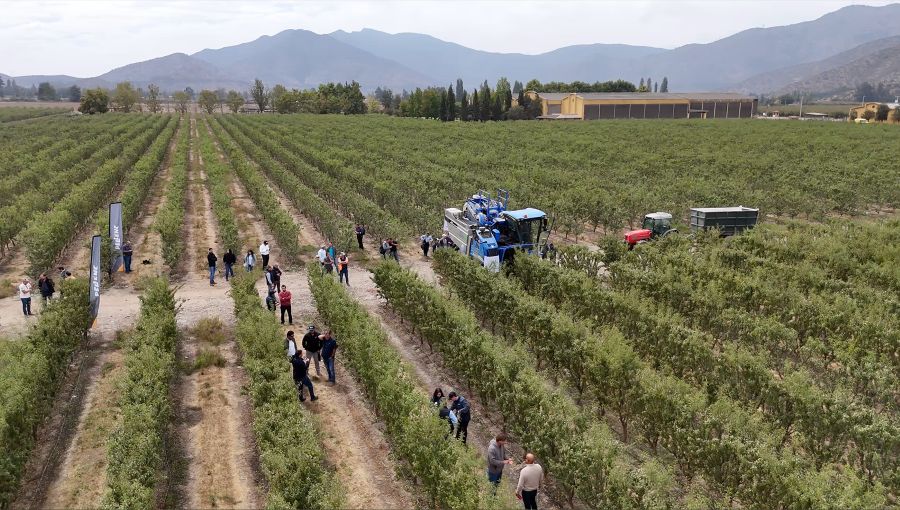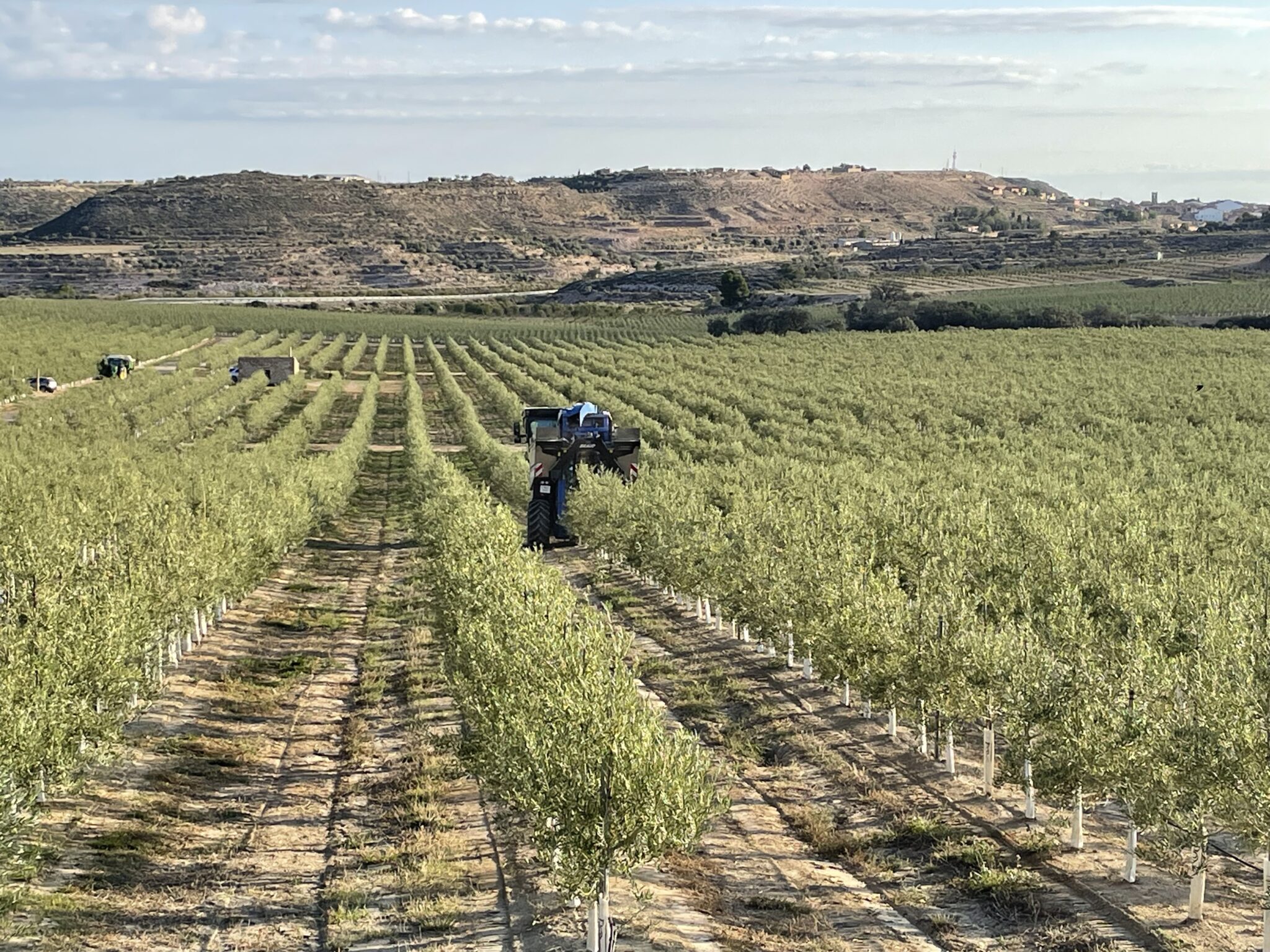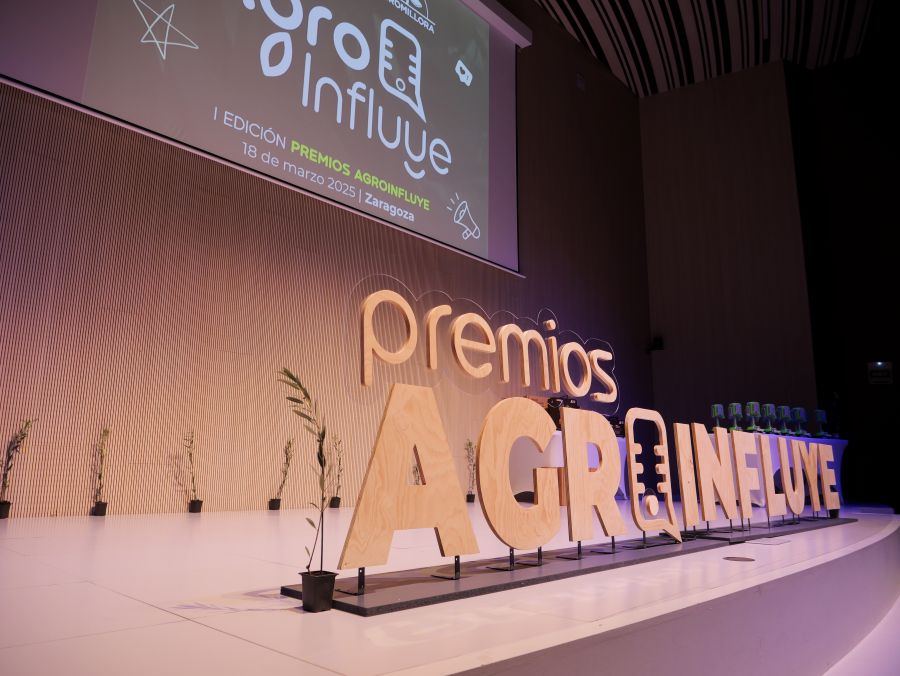Xylella fastidiosa (Xf) is one of the quarantine plant pathogens in the EU and is included in the priority list of the most threatening plant diseases. It is a bacterium first discovered in grapevines in California and transmitted by various species of xylem sap-sucking insects that act as vectors. Different variants and strains of Xf are known worldwide, and more than 700 host plant species can be colonized. In some plant species, it can remain latent, but it is well known as the causal agent of significant diseases in grapevines, almond trees, oleander, citrus, peach, coffee, avocado, and olive trees, among others, leading to plant death.
The bacterium was first detected in Mediterranean countries in 2013 when scientists reported the presence of Xylella fastidiosa in olive trees in Apulia, southern Italy. Since then, surveillance has uncovered outbreaks in regions of France, Spain, and Portugal.
Since 2015, the EU has been funding research to mitigate the impact of the disease, and since then, knowledge has been developed, and emergency measures have been implemented to curb the spread of the bacterium in the EU
Agromillora is participating in the EU-funded Bexyl research project, which aims to implement customized and integrated prevention and containment strategies against current Xylella fastidiosa outbreaks and prevent new introductions in Europe.
The proposed work plan in the project will benefit from the active participation of farmers and society to raise awareness and facilitate the practical transfer of the most promising prevention and control strategies resulting from the research.
The project is coordinated by CSIC-Córdoba, started in 2022, and ends in 2026. In addition to technical objectives, the project includes an analysis of the socio-economic and environmental impact of the pathogen in climate change scenarios. More than 30 research institutions, government agencies, nurseries and farmers’ associations, NGOs, and operational groups of the European Innovation Partnership are participating. Bexyl supports both basic research and technological innovation studies.
Among the technical initiatives, we highlight:
- Work is being done to understand the factors driving Xf epidemics in the EU, considering the influence of climate change.
- Methods and new strategies are being developed for surveillance, early detection of the bacterium and its vectors, and disease monitoring, with tools ranging from remote sensing technology to the sense of smell of dogs.
- The long-term resistance of the host to Xf is being explored, and the basis of resistance mechanisms is being deciphered. For this purpose, a global network of sentinel plots is being established in locations with different latitudes and soil-climatic conditions with the presence of Xf, where data on the response to the pathogen in different species are collected.
- Economically and environmentally rational solutions are being developed for the effective control of Xf vectors and the interruption of transmission.
- Economically and environmentally rational solutions are being developed for the effective control of Xf and the promotion of plant health. This line of research includes thermotherapy to ensure the safe exchange of plant material. The possibility of using beneficial bacteria, bacteriophages, innovative compounds, and formulations that reduce the spread of Xf within plants is also being studied.
At Agromillora Iberia, we participate in the establishment of sentinel plots as a supplier and exporter of fruit trees of different species. We are also part of the working group exploring the use of thermotherapy for plant sanitation and the production and commercialization of Xf-free nursery plants. We also collaborate in evaluating the ecological, social, and economic impacts of Xf and in the dissemination, communication, and technology transfer plan of the project’s results.
Below, we briefly present the work carried out by the R&D&I Department of Agromillora Iberia in the use of thermotherapy. The thermotherapy trials aim to evaluate technical solutions, application conditions, and logistics for the implementation of thermotherapy at the nursery/quarantine level in host plants. To date, much information is available on the response of certain plant species, mainly grapevines, to thermotherapy by heat treatment, and well-defined protocols exist to ensure the health of plant material against various pathogens; although this information is non-existent for other species of nursery interest.
First, we have defined the experimental conditions (type of material, range of working temperatures, exposure times, growth conditions, etc.) in relevant nursery species, almond, and olive, with different propagation systems.
We have a thermotherapy equipment provided by the company RG-Projects (La Pobla del Duc, Valencia, Spain), a leader in the sector in the manufacture of these equipment, in which the thermotherapy process is carried out by immersion of the plant material in hot water.
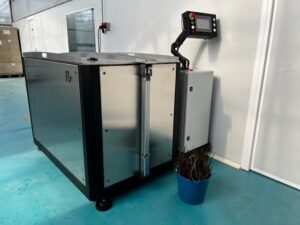
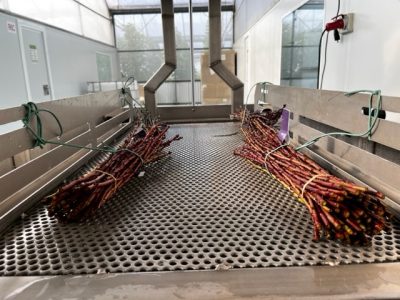
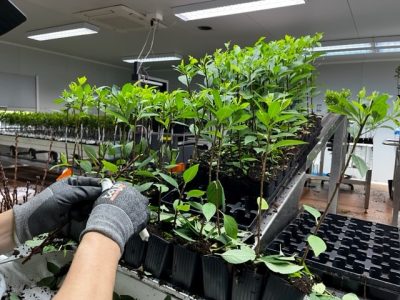
In almond trees, dormant wood buds are treated and kept in a cold chamber, and a pre-hydration treatment is performed by immersing the base of the cuttings in room temperature water overnight. The buds are then grafted onto micropropagated rootstocks, material that is guaranteed to be Xf-free. After transplanting, graft viability and phenotypic development are measured. Four varieties have been tested: ‘Avijor’, ‘Pentacebas’, ‘Isabelona’, and ‘Vialfas’, and five treatments (including control) at temperatures (T) between 40ºC-50ºC at different exposure times (t).
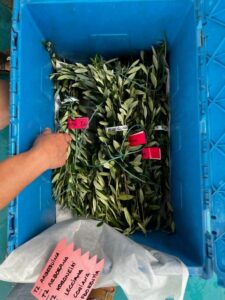
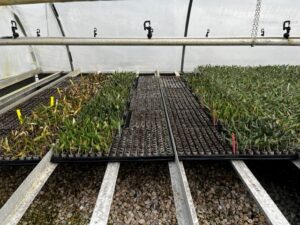
In olive trees, semi-hardwood branches are treated before cutting, and rooting capacity and phenotypic development are measured after transplanting. Six varieties have been tested: ‘Koroneiki’, ‘Arbequina’, ‘Arbosana’, ‘Lecciana’, ‘Coriana’, and ‘Florentia’, and five treatments (including control) with temperatures between 35ºC-50ºC at different exposure times.
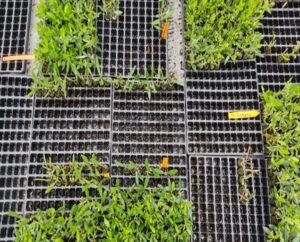
The first phase consisted of evaluating the effect of treatments on the viability of different propagation plant materials in healthy plants, i.e., not infected by Xf. The first requirement for nursery application is that the temperature/exposure time combinations must allow the survival of the plant material, maintaining propagation capacity and phenotypic characteristics.
From these initial trials, a working range of T/t with economically acceptable viabilities (>70%) has been defined. Under our conditions, depending on the almond variety, it has been established at temperatures between 45ºC-50ºC and durations between 20 min-50 min; and in olive, it ranges between 40ºC-45ºC and durations between 20 min-50 min.
In complementary experiments, work has been done to adjust the protocols to the maximum temperature and extend the exposure times while maintaining viability, and to implement large-scale sustainable thermotherapy treatments at the nursery level, offering the necessary safety.
In a second phase, other working groups are testing the effectiveness of these treatments (defined in the previous phase) on plant material infected with Xf, in biological containment facilities authorized to work with this pathogen. These experiments will identify the sensitivity thresholds of the bacterium in different host species and under these conditions, and determine if it is possible to effectively eliminate the pathogen (endophytic bacterium) with these treatments.
The work carried out has allowed the adjustment of the most suitable T/t combinations to ensure acceptable viability rates in the nursery. Sensitivity to treatments has been conditioned by the species, the type of plant material, the size of the treated plant material, and in some cases, the variety.
The results allow considering the large-scale application of the technique and integrating it seamlessly into the nursery production process as a tool to combat this pathogen. These experiments will be completed with long-term and field condition monitoring of treated plants to ensure that it does not impact fruit production.
R&D&I and Quality Department Agromillora Iberia, SLU
Director: Mireia Bordas
Research Team: Marisa Cunill, Carlos Rieder, Natalia Puig




